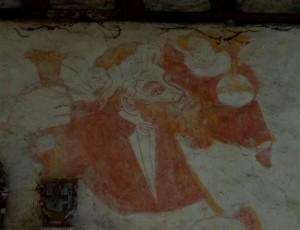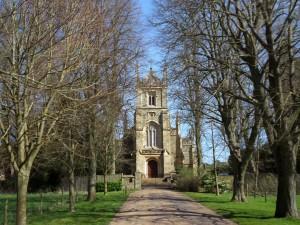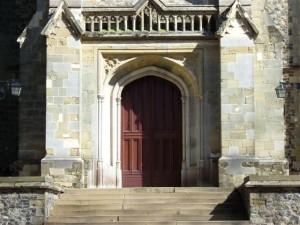A faded glory?
Yesterday I visited two churches set in a an idyllic swathe of the Surrey countryside. Separated by the Tillingbourne River, babbling through daffodil strewn banks of emerald grass, they could not have been more idyllic. The smaller of the two churches was the former parish church of Albury, situated on the Albury estate and first built in the 12th Century. Today it is open only occasionally, allowing visitors to see its charming simplicity, and its 15th century wall painting of St Christopher. It ceased to be used as a regular place of worship in 1839, when a new parish church was opened outside the perimeter of the estate in the center of the village.


Henry Drummond, who bought the estate in 1819, oversaw the move away from this chapel, and also the construction of a large new church on the other side of the Tillingbourne – the Apostles’ Chapel. Drummond was an ‘apostle’ within the Catholic Apostolic Church, and this impressive building (opened in 1846) was a testament to his enthusiastic support of the movement. After his death, the building was still used occasionally up until 1950:

The doors now remain firmly closed. The building is meticulously maintained, and will be so, behind its locked doors, until Christ returns:

Thankfully, the work of the church is alive and well in Albury, as you can see by clicking here. The sense of melancholy, folly and hubris pervading this corner of an English landscape remains though.
